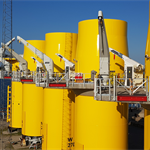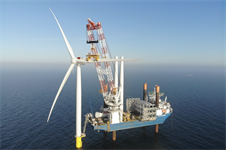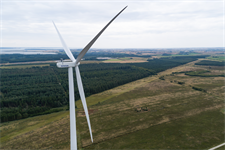Great British Energy to work with Crown Estate to boost offshore wind leasing
Energy Disrupter

The centre-left Labour Party won power at the UK general election on 4 July vowing to establish Great British Energy as a state-owned energy investment and development firm.
Its first announced partnership is with the Crown Estate, through which the partners will focus on building out new offshore wind in the UK and could see up to 20-30GW of additional offshore wind seabed leases on the market by the end of the decade. The UK’s Department of Energy Security and Net Zero (DESNZ) estimates the partnership could leverage up to £60 billion (€71 billion) of private capital in offshore wind development.
GB Energy and the Crown Estate also plan to work together to “stimulate new technology in areas such as floating wind, hydrogen, carbon capture and tidal energy”, invest in ports and clean energy supply chains, and derisk future leasing rounds for offshore wind developers.
The government added that once GB Energy has been formally launched – after legislation to create the company has been finalised – it would examine policy reforms designed to help speed up the development process for new renewable energy projects.
In a speech alongside DESNZ minister Ed Miliband, prime minister Keir Starmer revealed that Jürgen Maier, the former chief executive of Siemens UK, would chair GB Energy.
“Together [GB Energy and the Crown Estate] will work with the market, exploiting capabilities that only the government has, and crowding in the very best from the private sector,” Starmer said.
“Great British Energy [and] the Crown Estate will unleash a tidal wave of public and private investment to drive the low-carbon transition, to create good, secure jobs and supply chains across Britain, fast-track energy projects already in the pipeline and make the UK a world leader in the clean technologies of the future.”
The government introduced the Great British Energy Bill to the UK parliament today (25 July), with a large majority of seats in the lower House of Commons likely to support its passage into law.
The legislation provides plans to launch GB Energy with a capitalisation of £8.3 billion (€9.86 billion) over the course of the parliament. The new firm will also have access to some of the £7.3 billion allocated by the government earlier this month to the state-owned Infrastructure Bank that funds infrastructure development in the UK.
The new state-owned energy player will be headquartered in Scotland.
Positive reaction
Renewable energy groups reacted positively to news of the planned partnership between GB Energy and the Crown Estate.
“The announcement this morning of a partnership between the Crown Estate and GB Energy is good news for the future of renewables in the UK,” said James Alexander, CEO at UK Sustainable Finance and Investment Association (UKSIF). “We are particularly encouraged by the commitment to reform the policy framework to reduce the time it takes to bring offshore wind projects to fruition, as this is something we and our members have been calling for for some time now,” he added.
Alethea Warrington, a senior campaigner at climate charity Possible, also welcomed the news but criticised GB Energy’s parallel plans to develop new nuclear energy alongside the planned renewables expansion.
“Rather than asking the taxpayer to subsidise unproven new nuclear reactors, we should be focusing on delivering what we know are the quickest, cheapest and cleanest sources of energy – wind and solar power,” she said.
Current seascape
The UK already has the world’s second-largest offshore wind fleet, after China, with more than 15GW of installed capacity and more gigawatt-scale projects currently under construction.
The Crown Estate is a public corporation that manages assets owned by the British monarchy, and previously organised several auctions rounds of offshore wind leases in the UK.
It is currently working on one of the world’s largest floating offshore wind tenders in the Celtic Sea, which plans to auction rights to build three offshore wind farms each with a capacity of up to 1.5GW.
















